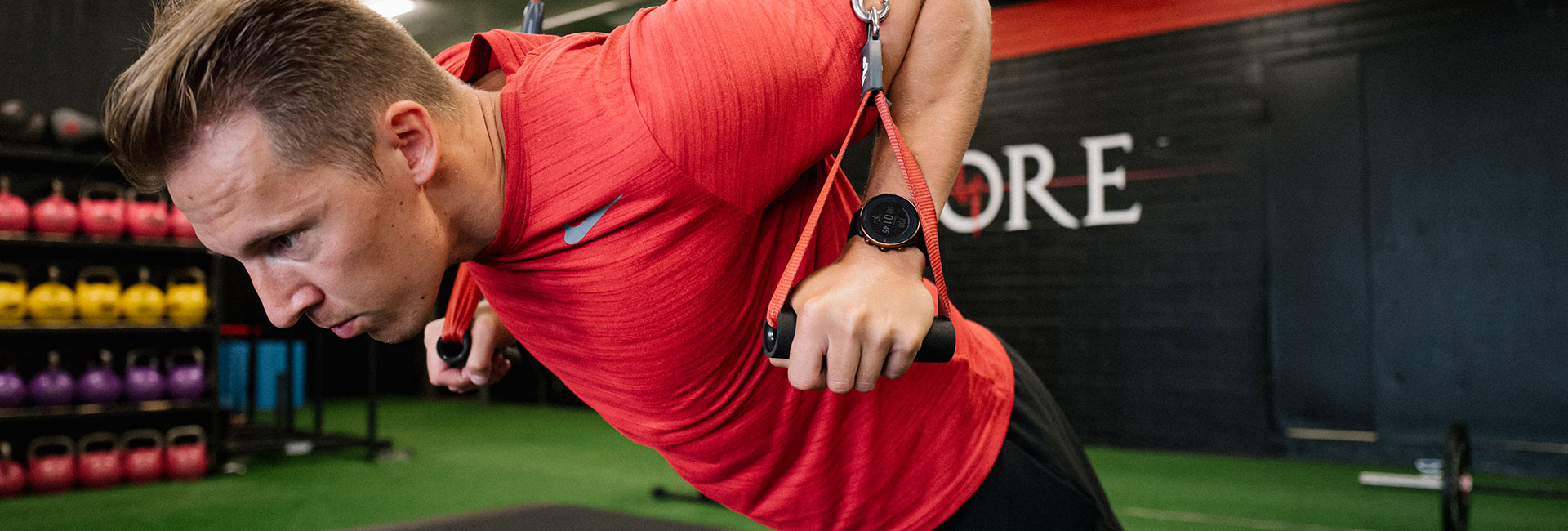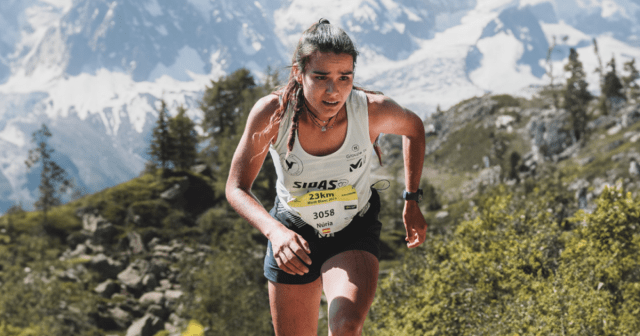Despite loads of research and data supporting this or that training style, there is no one-size-fits-all solution that works for every athlete. This universal truth doesn’t discriminate, it holds true from rookie age-groupers through top-level professionals and applies to low heart rate training, too.
On paper, training at low intensity may sound counterintuitive, but many pro athletes seem to have taken the volume-based approach, spending more time training with a significantly lower intensity.
But, how can you show up on race day ready to compete if you spend most of your time in HR Zone 2?
Well, for starters, training full-time for months on end can increase the risk of injury and the potential for burning out, so upping the volume and decreasing the intensity can help alleviate some of the burden from training stress.
It obviously works. For professional triathletes Chris Leiferman and Bart Aernouts training at low intensity has yielded results and great race success. By spending most of their time training in heart rate Zone 2, they’ve seen their pace improve and they’ve been able to train more with less injuries.
Here’s why these athletes prefer this volume-based approach over one that’s intensity-based, how they determine their zones and track their efforts, and how this translates into race pace.
Why Low Heart Rate training works?
Chris Leiferman:
I do most of my running in HR Zone 2 because I respond better to volume and stay injury-free. When I get in HR Zone 3, 4 or 5, it starts messing up my immune system and I start to break down a little bit.
Once you get into Zone 4 or Zone 5, it really puts a lot of stress on the body. Of course, if I’m doing short-course stuff, it’s important to hammer Zone 4 or Zone 5, but for IRONMAN training specifically, Zone 2 has been a good marker for me.
Bart Aernouts:
I’m quite similar. I was always lucky to have coaches who prefer to work with this kind of approach with lots of base training. For me, it works really well to do a lot of miles in the base zone and only incorporate a few speed sessions.
It might sound weird that you improve by running slow, but it’s a safe area where you can train a lot with less risk of injury.
Just by looking at my performances, even on the fast running I improved a lot by training in Zone 2.
How to do LOW HEART RATE TRAINING?
CHRIS LEIFERMAN:
I use Zone 1 as a super easy run, just for some recovery.
Zone 2 is an aerobic run, usually a distance run. After a few weeks of volume in Zone 2, my speed tends to pick up.
I do some pace work as well, but maybe once a week. That’s five runs in Zone 2, and one session at race pace each week.
A workout with a faster pace will be kind of a fartlek, and something I’ve learned is that I shouldn’t be on the track too often. I stay a lot in that endurance Zone 2 pace, and then pep it up to Zone 4 or 5 for up to 15 minutes, then back it off to Zone 2. I’ll repeat that back and forth a few times.
BART AERNOUTS:
I spend at least 70 percent of my time in Zone 2. The last 30 percent is either an easy jog or quality [higher-intensity] sessions.
My HR Zone 2 is also close to my race pace in the IRONMAN marathon, so it’s actually a lot of race pace, but in training it doesn’t feel like it.
If I’m in shape, I run the same pace as the marathons in the race. Of course in the race it’s different after six hours of racing, and Zone 2 is the highest you can go.
whIch factors influence heart rate?
Bart Aernouts:
Temperature is one of the first things, and fatigue and stress affect heart rate, too. If you’re tired, you’ll have a higher heart rate in basic things, and in the hard stuff you can’t reach the high heart rate.
The elevated heart rate is a sign that it’s a lot harder for the body to perform in the heat.
Weather is the most important factor that influences heart rate. It’s normal if your heart rate is a bit higher in the heat, but a lot of people overtrain in the heat, trying to do similar efforts that they’re used to doing in other conditions.
The heat is also something that can make you really tired and ruin your race or training session if you spend too much time in it. It’s important to get used to the heat, but also recover from these sessions in a cooler environment. I try to find the balance between heat and elevation without letting it ruin my training.
Also, training at altitude has an impact on heart rate, especially at the beginning.
Chris Leiferman:
If you start to get dehydrated, your heart rate is going to start spiking up. You should feel fresh going into any training or race, so your heart rate should have a normal response.
Keeping up with your nutrition and carbs will help plateau your heart rate and increase your ability to keep the heart rate on a steady uphill slope and not spike.
If you’re able to continue your power upwards, and your heart rate responds in an upwards slope, then you know you’re staying on top of your nutrition. If you start seeing that your heart rate is spiking at the same power that you’re trying to achieve, then you’re going to dig yourself into a hole.
How do you calculate your Heart Rate zones?
Bart Aernouts:
I get the speed zones and the heart rate zones from the VO2 tests. Most of my training is based on these speed zones, but of course it’s on the track so it can be a bit different elsewhere.
My Zone 2 at the moment if I’m in good shape is 3:50 per kilometer to 4:15 per kilometer. My heart rate is usually between 120 and 140 bpm, but it depends on the day.
Chris Leiferman:
I race and wear a heart rate monitor, which gives me a good idea. It’s also based on max heart rate, and interestingly, I’ve never gotten my heart rate above 182 before so I’m already starting at a lower zone than most people.
I’ve clocked in at 32 bpm resting heart rate in the morning, and I’ve never gone over 182, so I take it into account that I have a lower set number than most people. I’ve only done a VO2 max test once, and that was years ago for college.
WhIch other running metrics you track?
Chris Leiferman:
Running Power has been a parameter I look at after the effort. If I know I was in Zone 2 with an average of 400 to 410 watts, it was pretty good and I didn’t overexert myself. If I see 420, then I know I went a little too hard.
On some of the longer workouts, I try to go by feel so I know when I get out to a race I know how to pace myself. The main running metrics I keep on my Polar Vantage V are pace, heart rate, duration and cadence, and that’s what’s on my main screen for a long Zone 2 run.
Bart Aernouts:
I track speed as a lot of my training is based on speed zones. Of course, as I mentioned, I monitor heart rate and feeling as well. I keep it simple. I look at running power after a session, but I’m not using it while training.
I wear the Polar Vantage V, and the built-in heart rate sensor is interesting for swim training, and I often check it after the session. The battery life is something I appreciate, and I also look at what training phase I’m in because I can see if I’m overtraining or undertraining, and it’s interesting to watch and track.
I also test my VO2 quite often with my coach. I’ve been testing it for almost 13 years, and it’s all feel testing on the track. We use it to focus my overall plan, and see if I need more basic running or some faster sessions. Most of my training is based on this testing.
What benefits does training with low HR bring?
Doing speed sessions three times a week with bike work and all the run volume, was way too much for me.
CHRIS LEIFERMAN:
It helps to avoid getting sick and injured. When I trained with more intensity, my body would start breaking down and I’d get stress fractures with too much training above Zone 2.
With low heart rate training, I can run fast with a foundation of good volume and day after day, week after week of healthy training.
BART AERNOUTS:
I’ve seen based on my training that these lower zones are a great way to improve. It’s a lot about confidence. A lot of athletes are not confident enough to train a lot in the lower zones, thinking they need to train a lot of race pace to be faster in the race.
Low heart rate training sessions are easy to recover from, and if you do a few quality [high-intensity] sessions, you need to make sure the quality is high. You need to train a lot in these lower zones because quality sessions needs to stay quality.
It’s important to do quality sessions really well, and make sure everything else is either endurance or recovery.
A lot of people push too hard in the easier sessions, and they can’t do as well during the quality sessions because they’re tired and not recovered properly. It’s a lot about overall load, and with the lower zones you can train more and still recover well.
If you liked this post, don’t forget to share so that others can find it, too.
Or give it a thumbs up!
I like this article
Please note that the information provided in the Polar Blog articles cannot replace individual advice from health professionals. Please consult your physician before starting a new fitness program.






